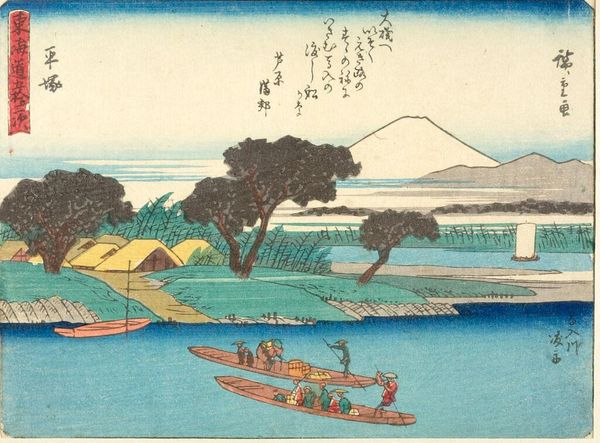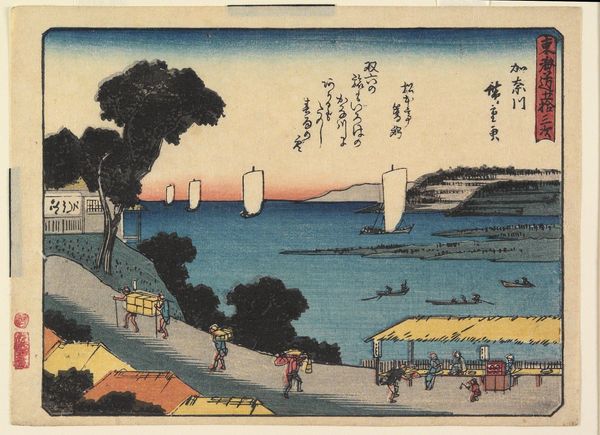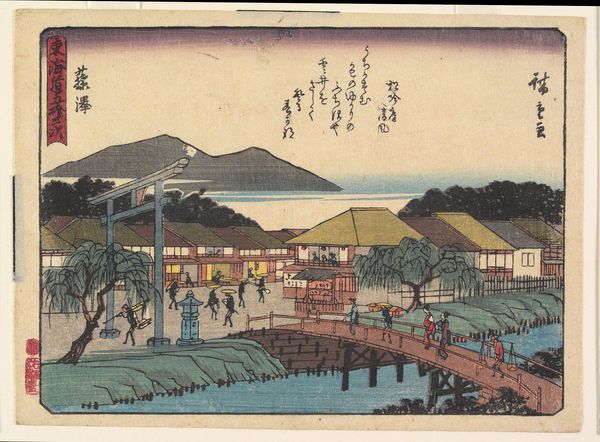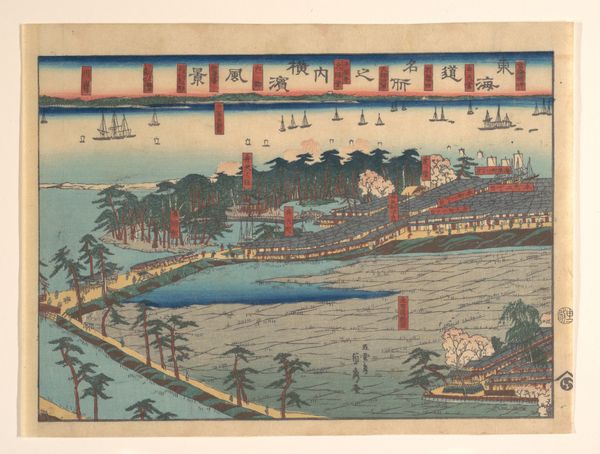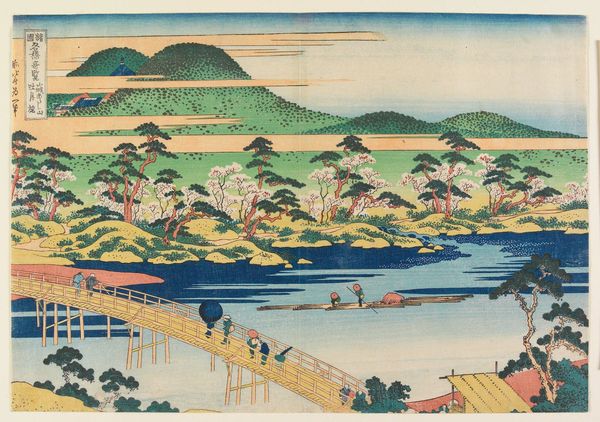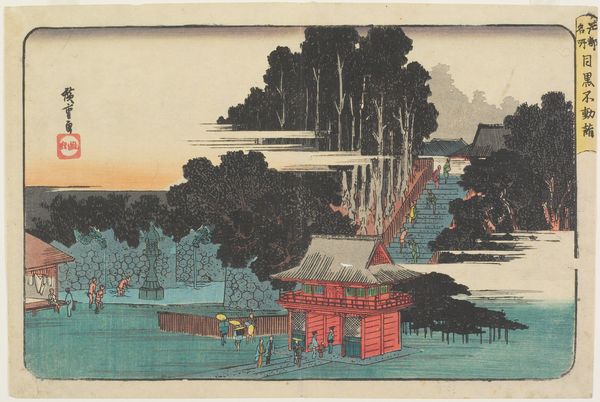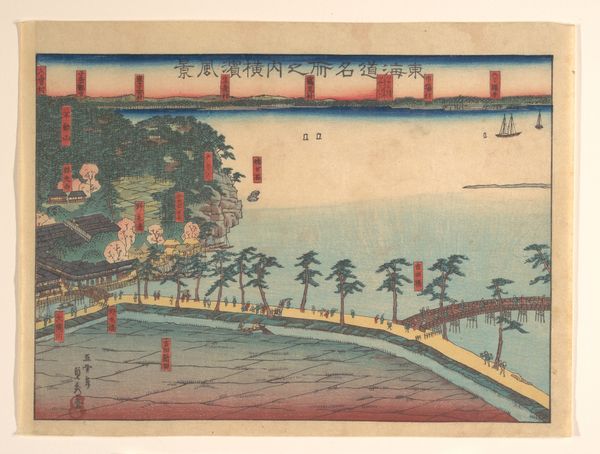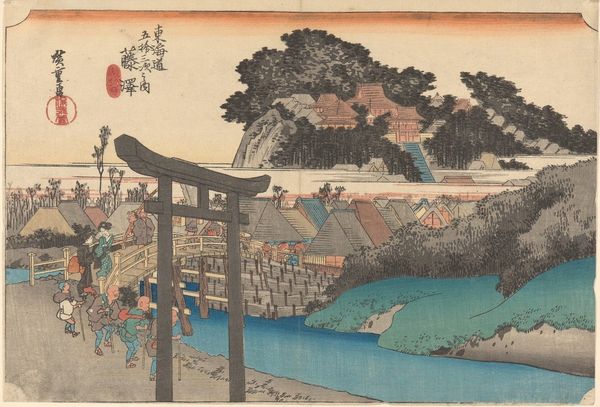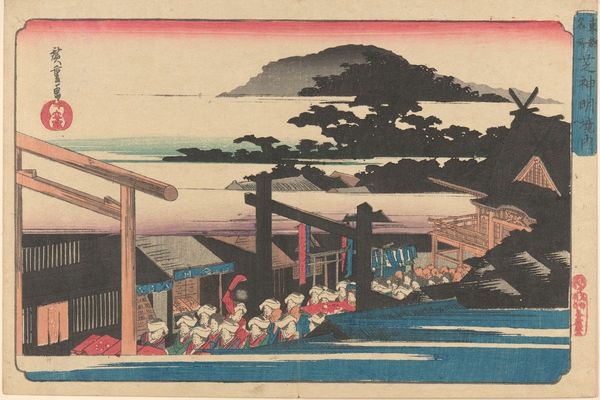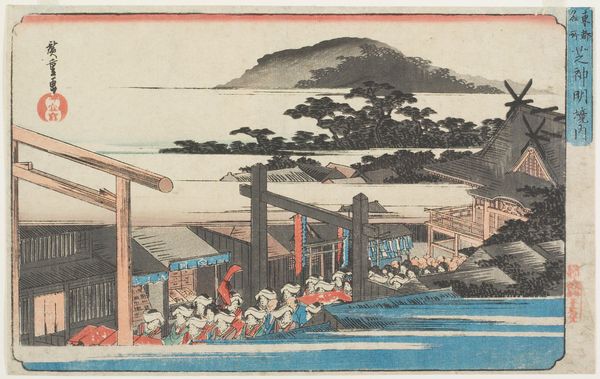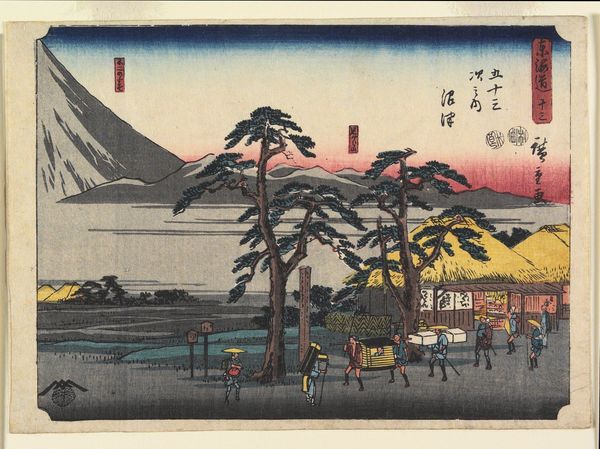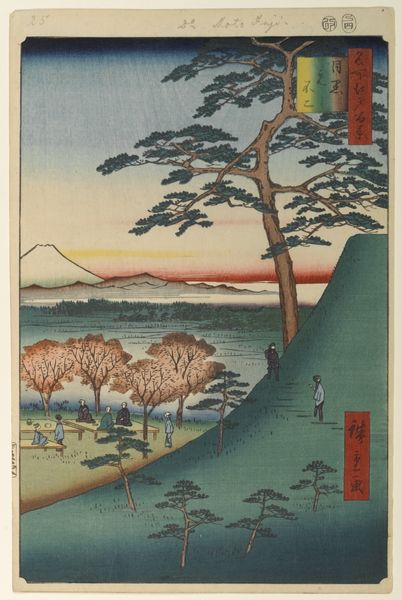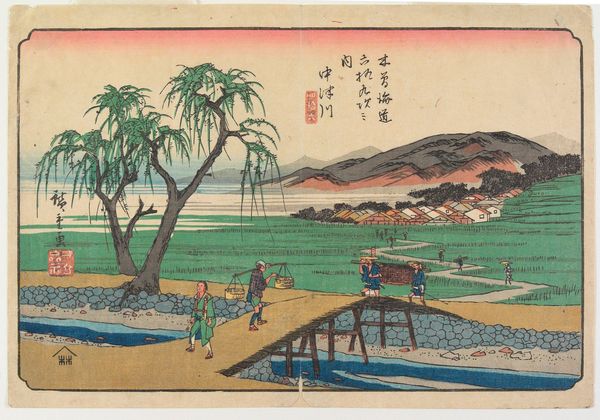
Picture of Matsuchiyama, from the series Famous Places in the Eastern Capital c. late 1830s - early 1840s
0:00
0:00
print, woodblock-print
# print
#
asian-art
#
landscape
#
ukiyo-e
#
woodblock-print
Copyright: Public Domain: Artvee
Curator: Immediately I'm struck by how dreamlike it is—everything seems to be bathed in this otherworldly, hazy light. The foreground trees especially seem to pulse with some unseen energy. What a thing of beauty. Editor: This is a woodblock print by Utagawa Hiroshige, titled "Picture of Matsuchiyama, from the series Famous Places in the Eastern Capital," dating to the late 1830s or early 1840s. The series focuses on iconic landscapes within and around Edo, modern-day Tokyo. As we consider this piece, it's crucial to remember the historical and political undercurrents, because these depictions were often entangled with issues of urbanization, class structure, and the very identity of Edo society. Curator: You know, looking closer, that dreamy quality I sensed really stems from the washes of color. They bleed into each other almost, creating this incredible depth. There's Mount Fuji herself, floating in the distance like a mirage. And is that a temple pagoda peeking through the trees? Editor: Yes, it certainly is. What I find particularly fascinating here is how Hiroshige uses the natural landscape to frame the more formalized urban or religious spaces, a frequent trope that speaks to a society in negotiation with modernity even two centuries ago. These carefully designed images speak to the intricate relationship between the individual, the community, and their physical world. The ukiyo-e print format was relatively accessible too; this makes them particularly potent vehicles for distributing very particular social ideologies. Curator: Hmmm, it makes me consider, were they staging grounds for constructing these notions of an ideal citizenry? I think the trees add an almost theatrical presence framing the skyline, as if these trees hold secrets—do you agree? Editor: Precisely! We can interpret the choice and placement of each tree in these landscapes as deliberate rhetorical devices. These artworks encourage conversations around place, identity, and ideology for a wider public in nineteenth-century Japan and with audiences today. Curator: Yes, the echoes in the past are certainly loud and ever-present. I find myself imagining walking into that print. Just incredible to behold! Editor: I think focusing on this image serves to remind us how art can subtly shape our perceptions, both of ourselves and the worlds we inhabit, across centuries and geographies.
Comments
No comments
Be the first to comment and join the conversation on the ultimate creative platform.

